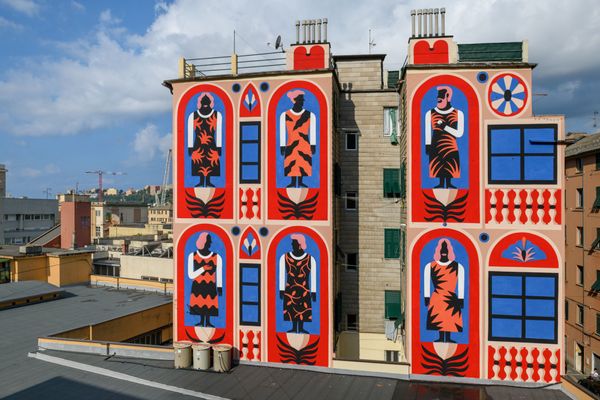Many of us certainly have had negative experiences from the years we spent in public education. In my memories, the unpleasant taste, smell, and appearance of food are often paired with depressing environments: scratchy and sticky brown plastic trays, rigid cutlery, and “Don’t play with your food” type admonitions from teachers.
The children’s catering object family of Zsuzsanna Sinkovits offers a reform proposal for canteens from the object culture perspective, sneaking fun and playfulness in the lunch breaks. Meet the concept of Kidware Cantine Set!
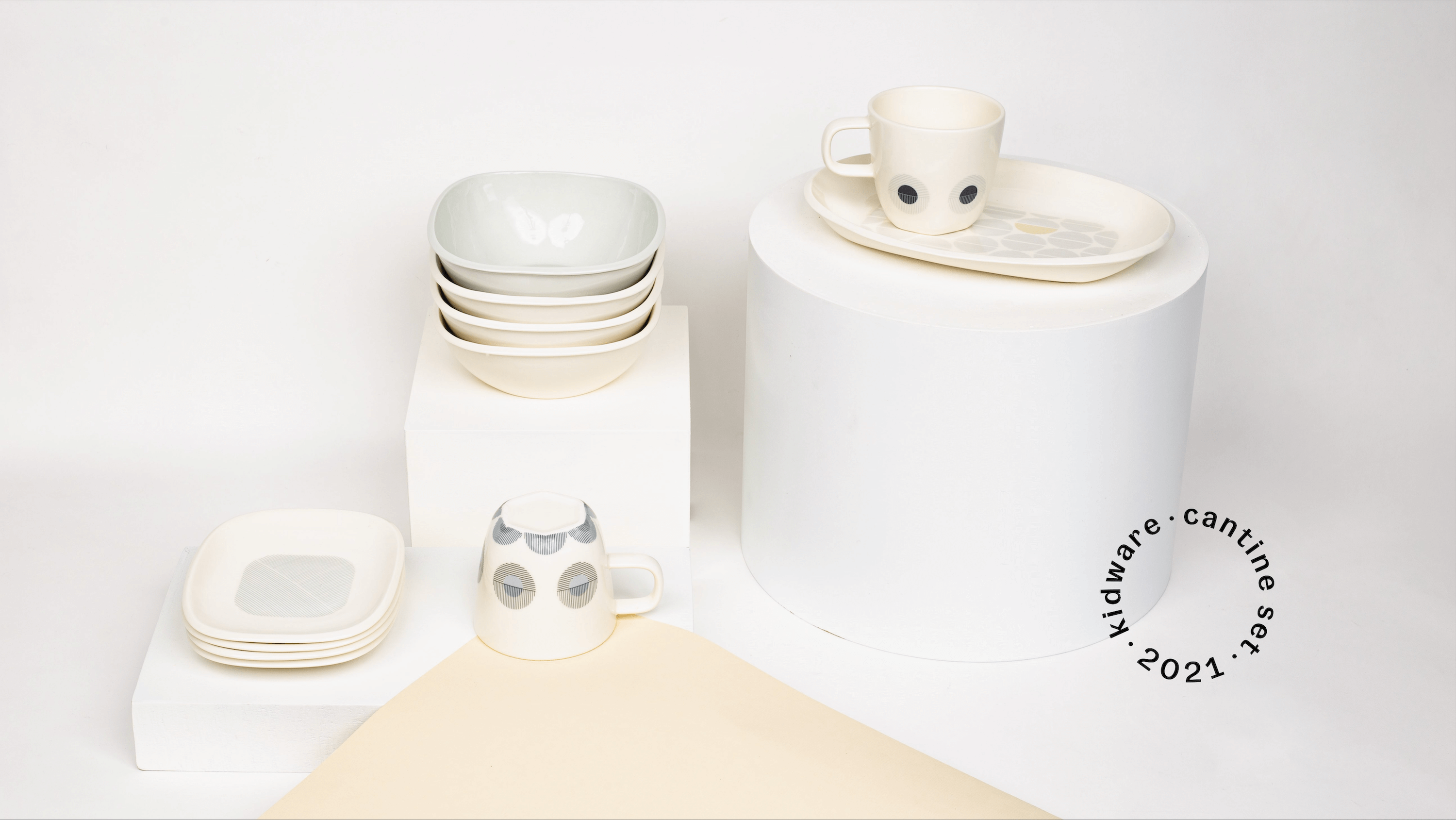
“The issue of children’s canteen meals is still a much-discussed and debated topic. Despite numerous initiatives and reform programs, school meals are often an unpleasant experience and situation for children, in which the environment plays an important role,” Zsuzsi writes in her research. In 2006, WHO also highlighted the link between poorly decorated, aesthetically displeasing canteens and the amount of leftover food, which results in high levels of waste and can lead to unhealthy snacking habits among children. Zsuzsi, as a ceramic artist, approached the problem from an object-oriented perspective, aiming to use design to magically transform the lunch break of the young generation into a more relaxed experience.
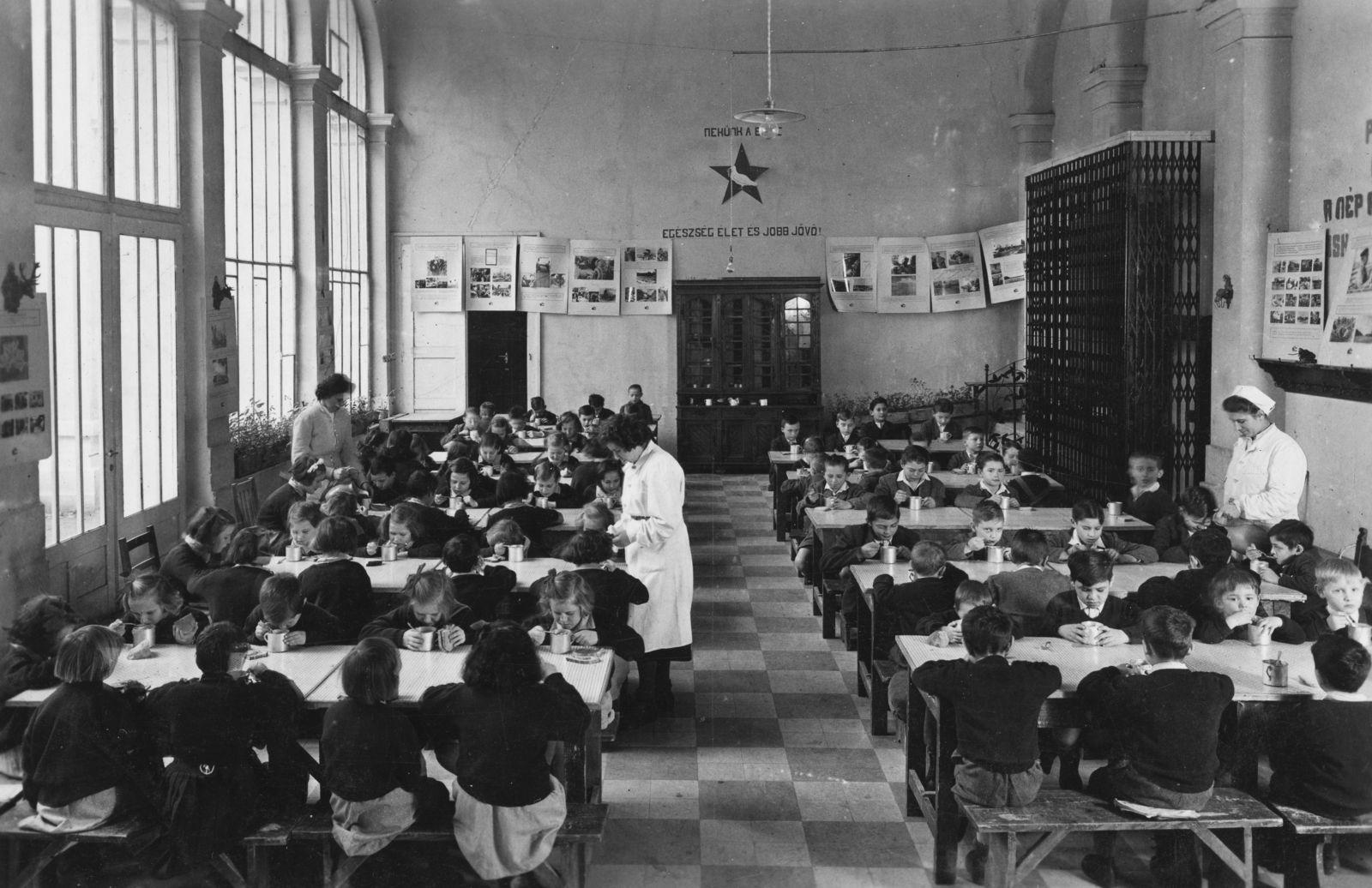

Canteens became widespread after the Second World War, along with the mass entry of women into the workforce, and gradually became commonplace in schools and workplaces from the 1950s onwards. This led to the need for practical, mass-produced, systematic tableware. One of the first examples is Kaj Franck’s Kilta, a set designed for small households, but also used as a reference for mass-produced objects. The most popular and widely distributed set in the domestic context was the UNISET 212 tableware by Éva Ambrus, which was awarded the BNV Grand Prize in 1978. As the name suggests, the UNISET was designed for universal use and was not target children explicitly: it was preferred in restaurants, hotels, factory canteens, and even on home tables. You can read more about the UNISET 212 and the importance of Éva Ambrus in the history of Hungarian design in our Object Fetish series in the essay by Piroska Novák.
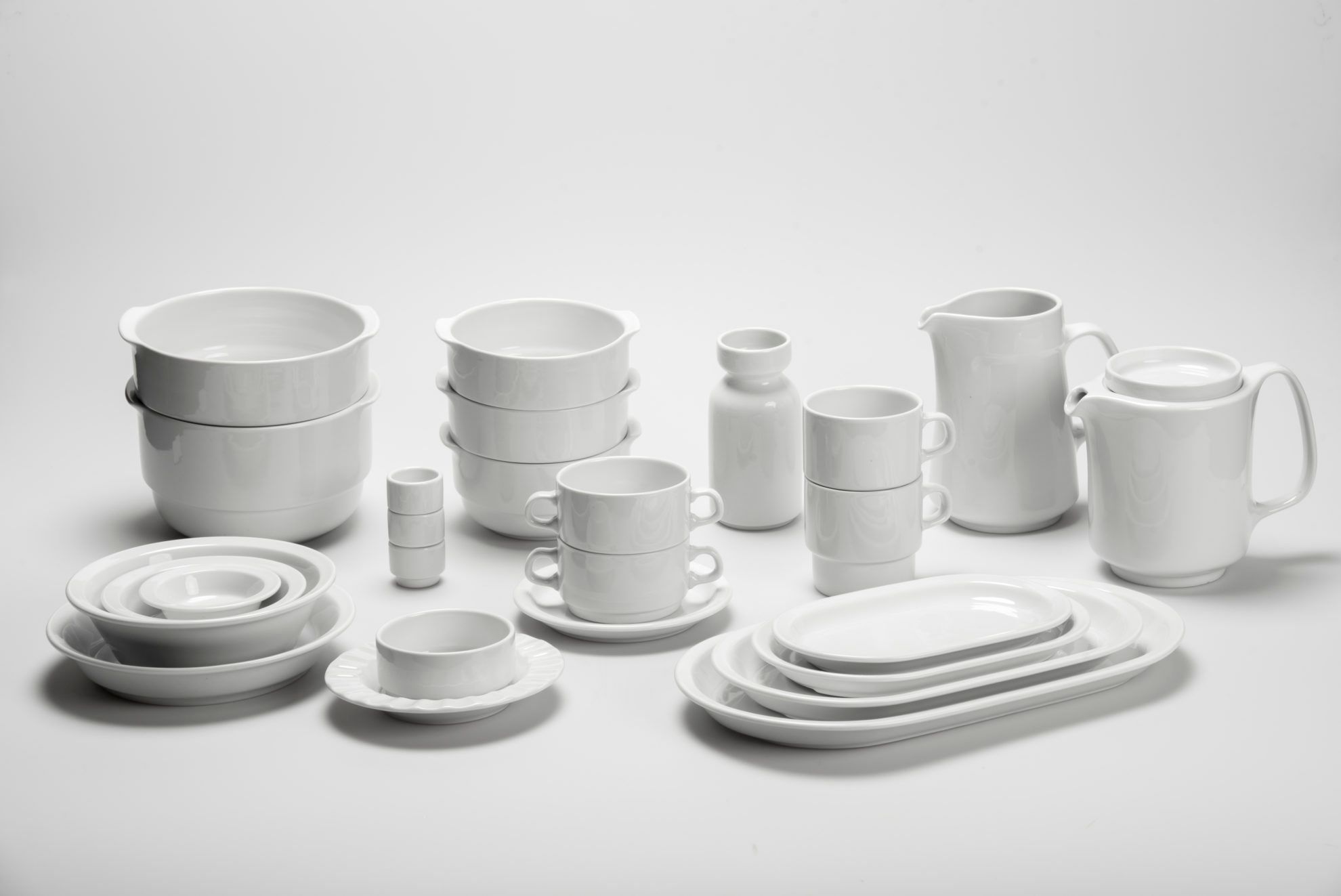
Zsuzsi began the design process building on these and similar design history references and after a complex exploration of the current situation. Through field visits, interviews and questionnaires, she found, for example, that the items used in today’s canteens don’t fit properly on the tray, soup gets cold too quickly on the plate, food allergies are difficult to mark, there is a lack of color, and the tableware is too standardized. In light of this, she experimented the colorful range of objects optimized for the needs of 7 to 14-year-olds, consisting of four ceramic elements, a glass cup, a recycled plastic tray, and a tray accessory.
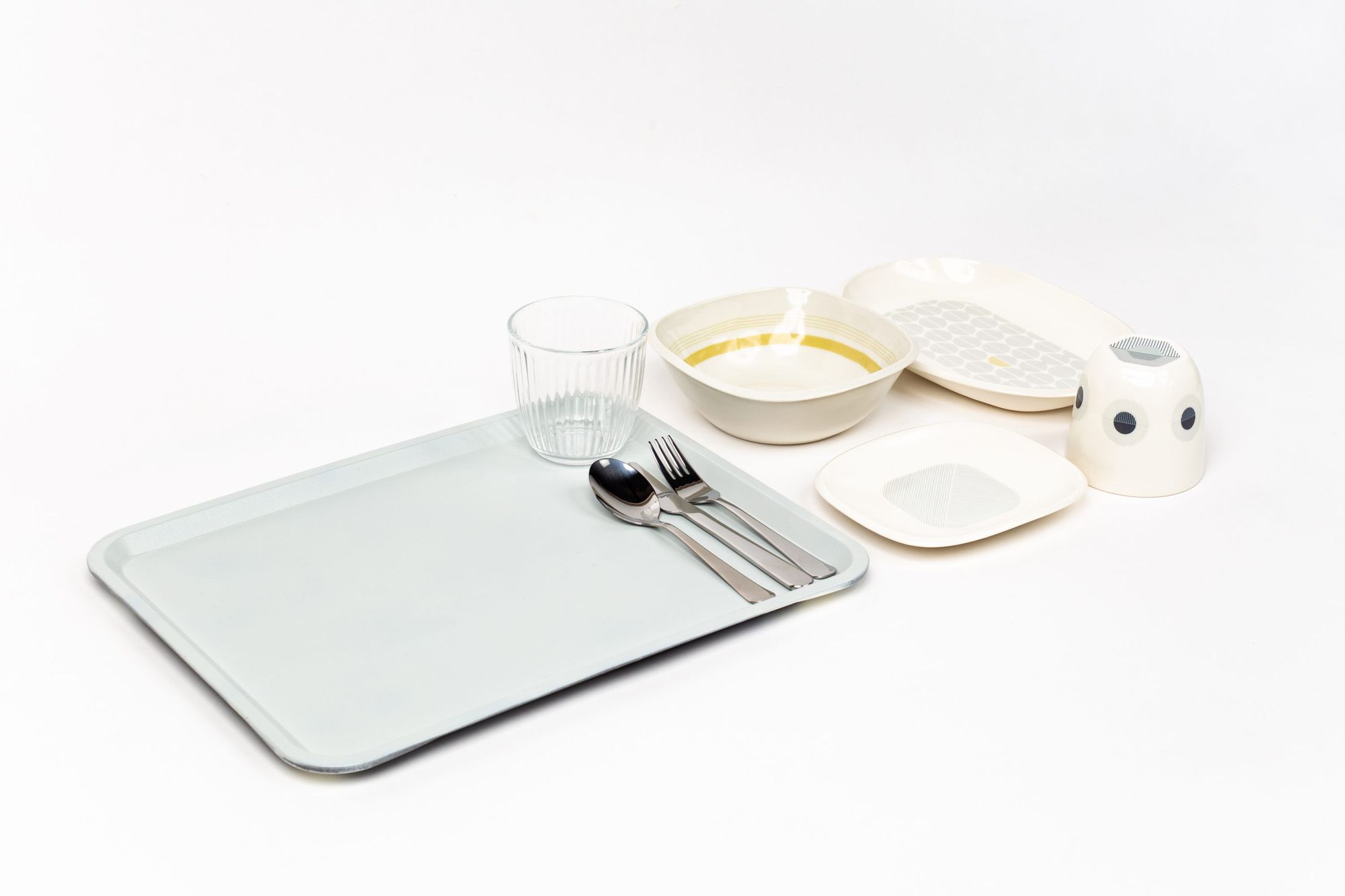
Zsuzsi doesn’t believe that games should be banned entirely from the school canteen; she wants to encourage children to do exactly that with her objects. The decoration on the main course plate, for example, is only visible when the children have eaten their food. Here the twist is that the repeating pattern hides a colorful element; the treasure hunt can thus take place during lunch. The mugs are individually decorated with geometric patterns, but when you place them on top of each other, characters emerge from them. The stripe on the deep plate also has a functional purpose; it helps visualize the capacity. This makes it easier for kitchen staff to serve different portions to different age groups, and children can check how much food they got.
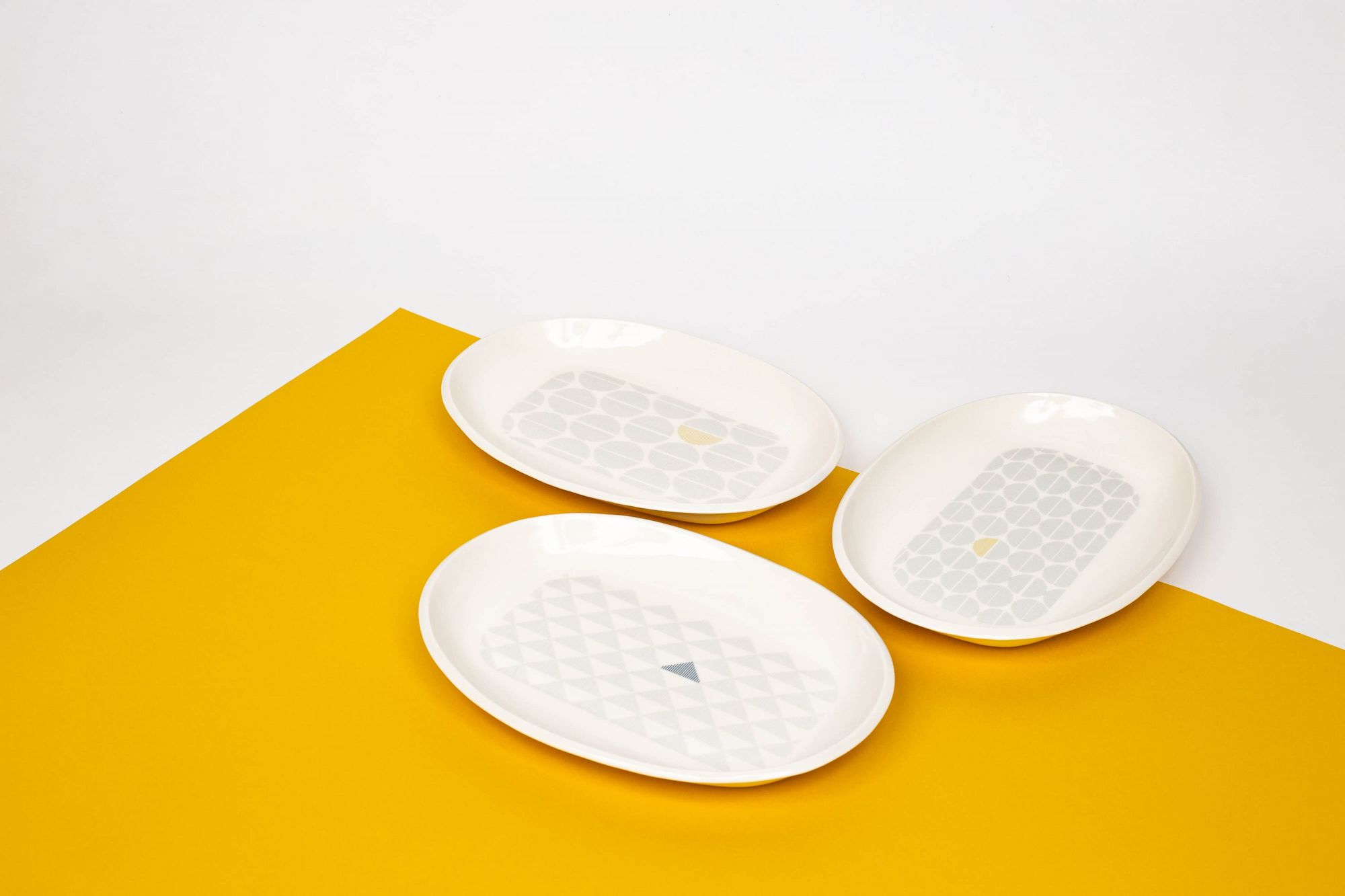

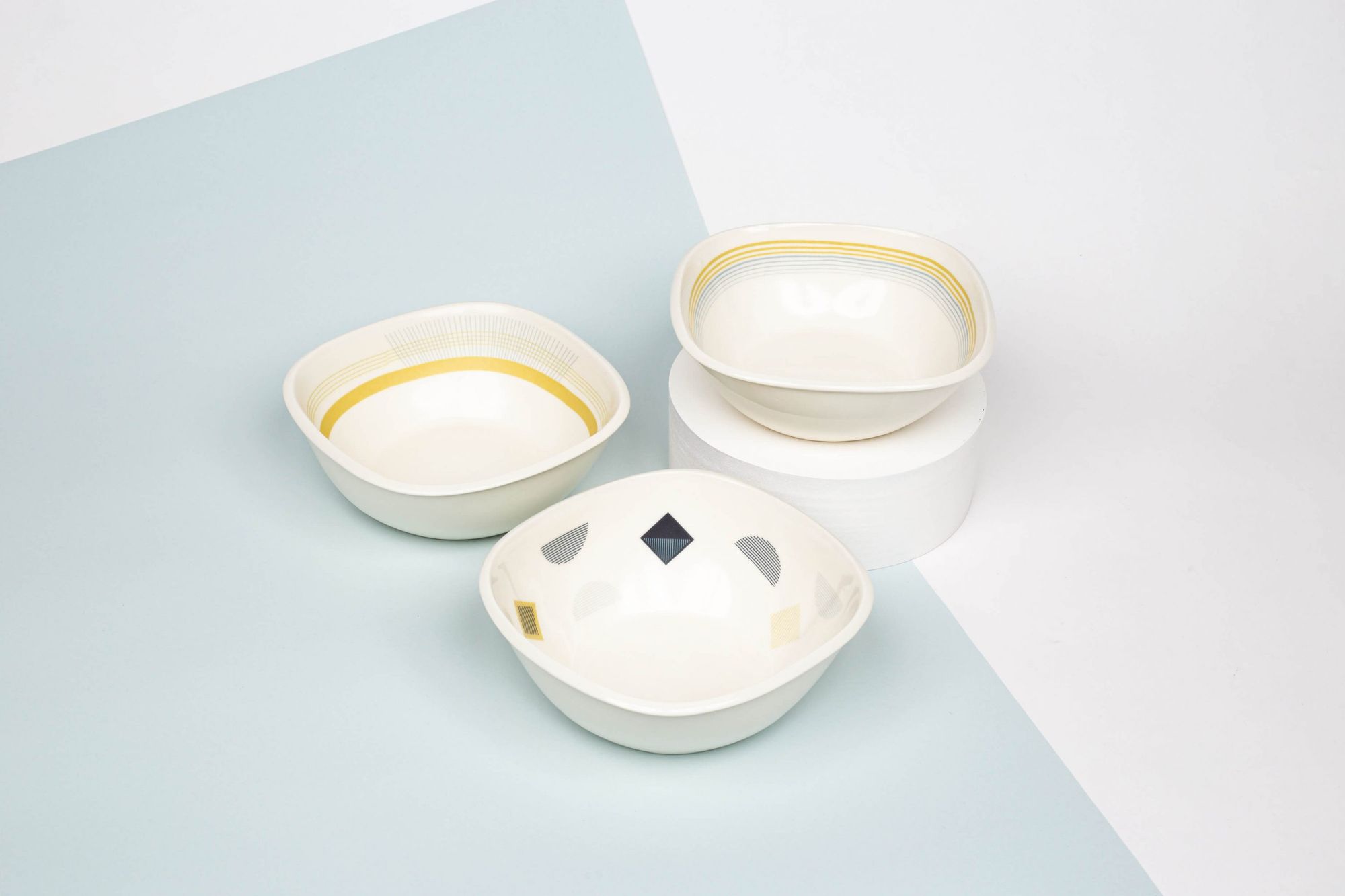
Another important formal principle was to create a light, positive overall effect: the bottom angles and edges of the objects start from different geometries, creating a playful transition of shapes. Ease of grip, stackability, and the availability of color and decor variants to suit different ages were also important design criteria. It is also no coincidence that the objects are cream-colored instead of the usual white porcelain for a softer impression. The colorful decorations were developed by Zsuzsi during workshops with the children, using their preferred figural patterns and the colors they most often choose, yellow and turquoise.
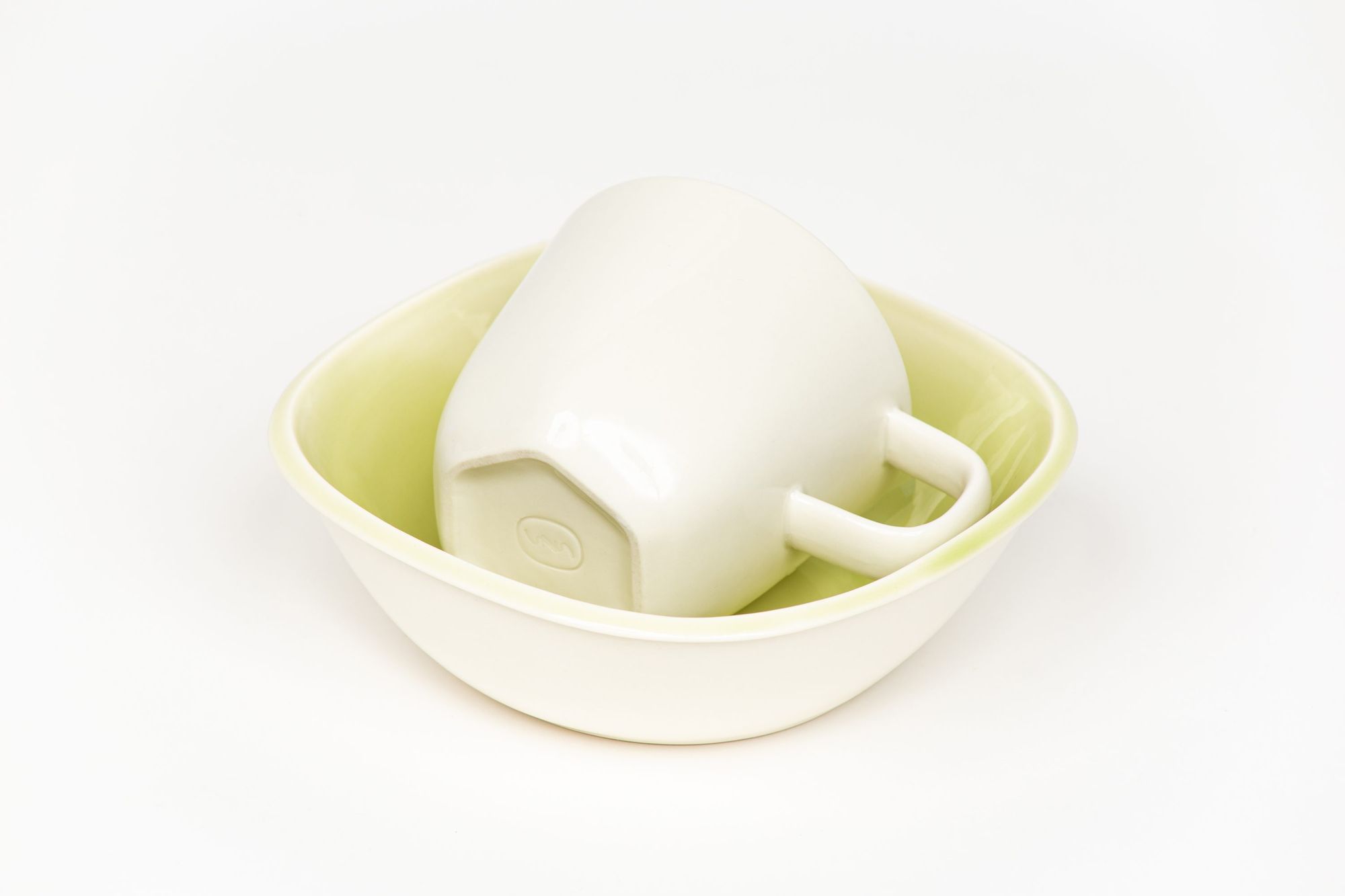
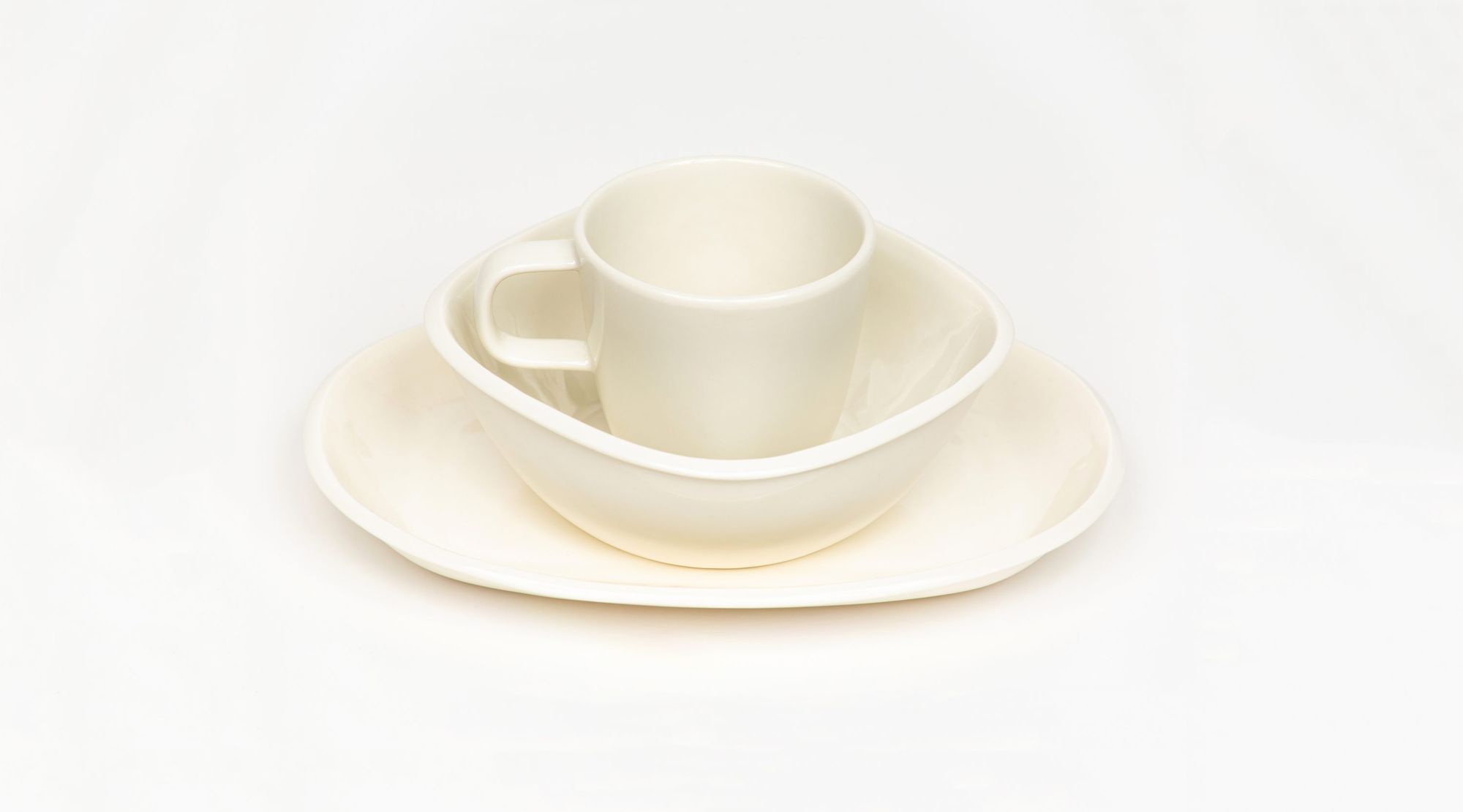
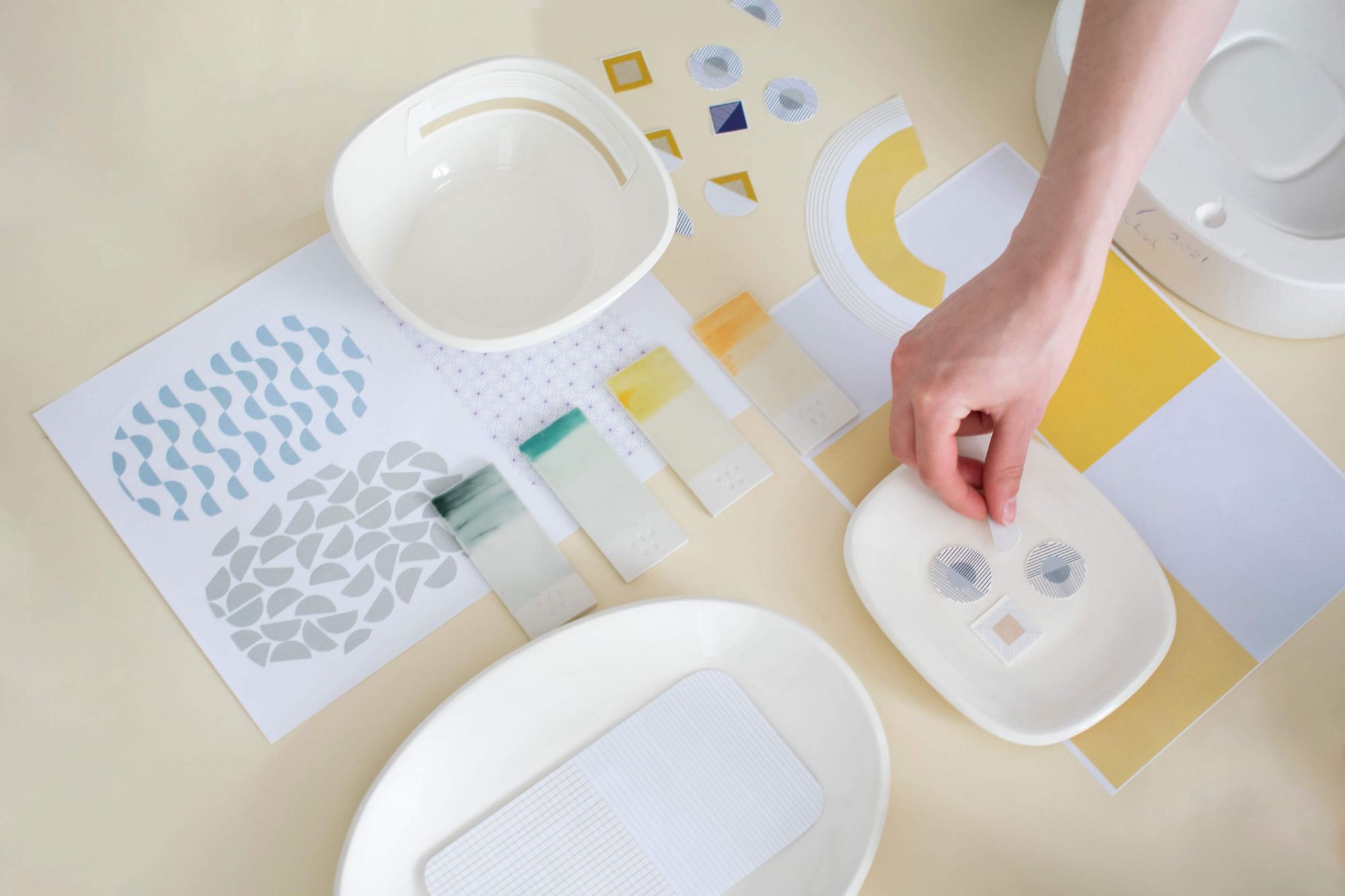
The set was tested in the AKG canteen in several phases, as Zsuzsi wanted to avoid the novelty dominating. “During the testing, the children, although critical, were very positive about the tableware set. When we tested several versions, they picked exactly the one they liked better and the more comfortable to use. For example, I heard two little girls whispering that even the water tastes better from these glasses,” Zsuzsi told us. Unfortunately, the situation of domestic ceramics factories does not yet facilitate the broad practical integration of the project, but in an ideal near future, the little students will spoon out the delicious and healthy lunches from Zsuzsi’s kitchenware.
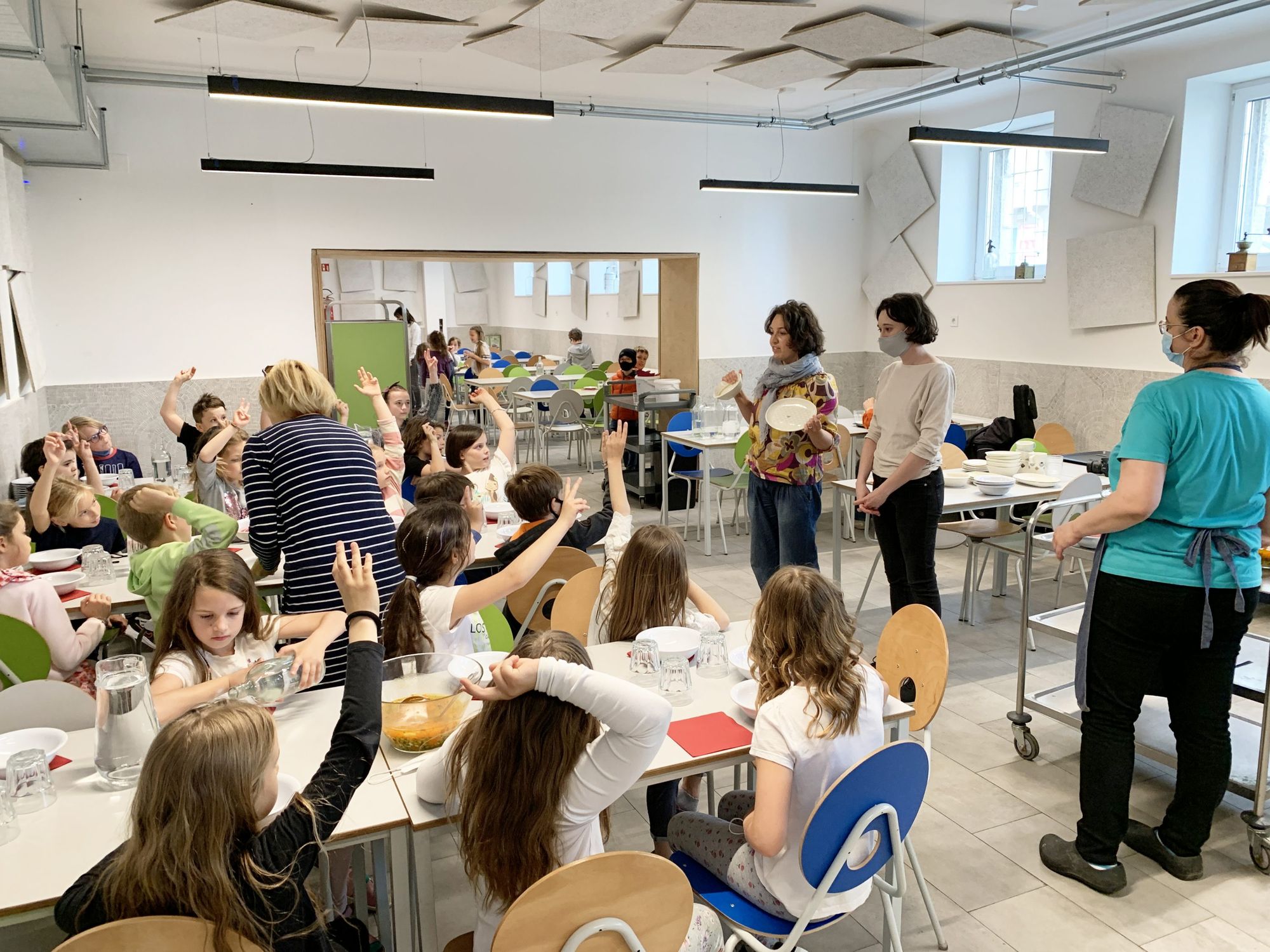
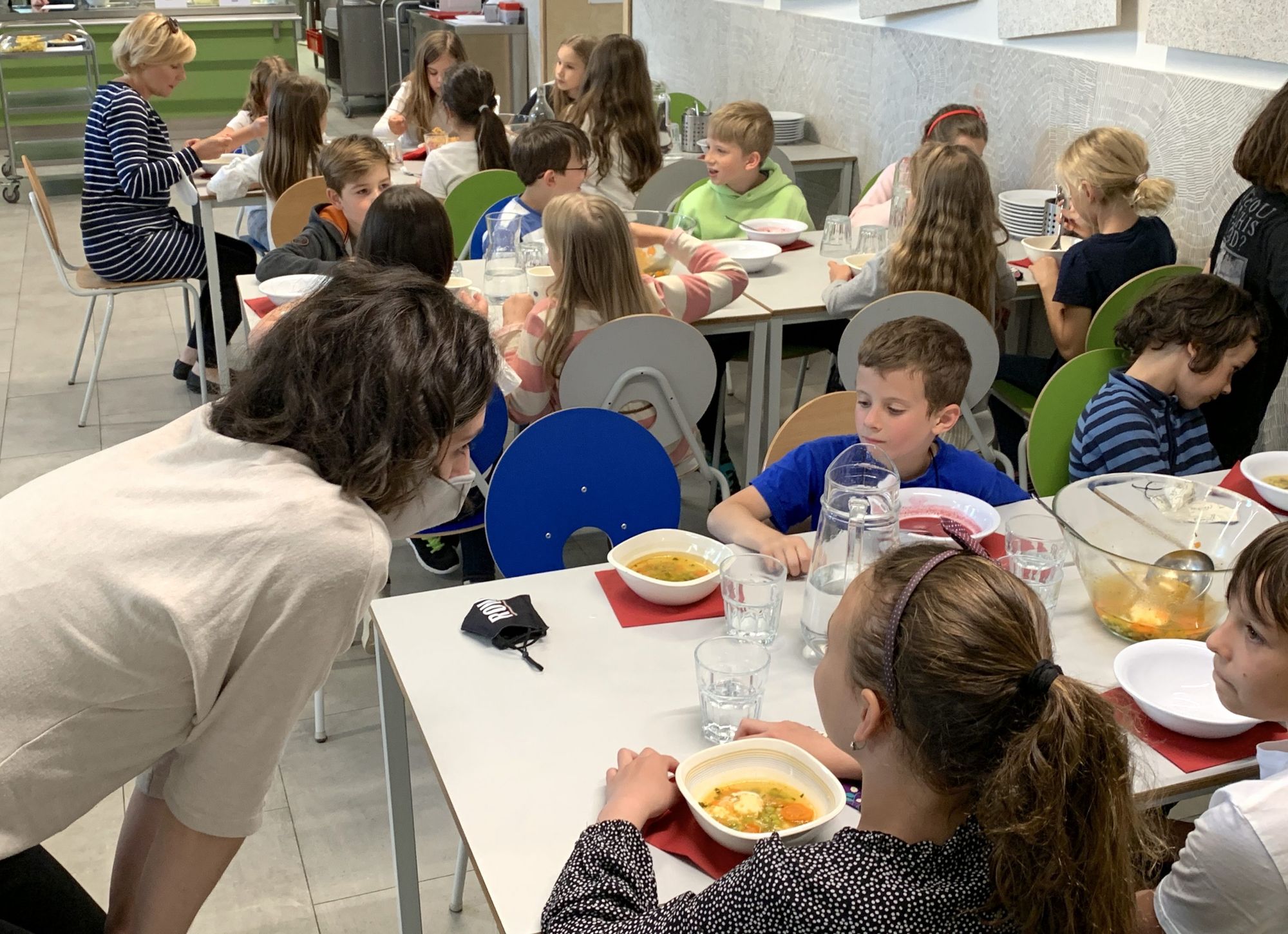
Photos: Novák Doró
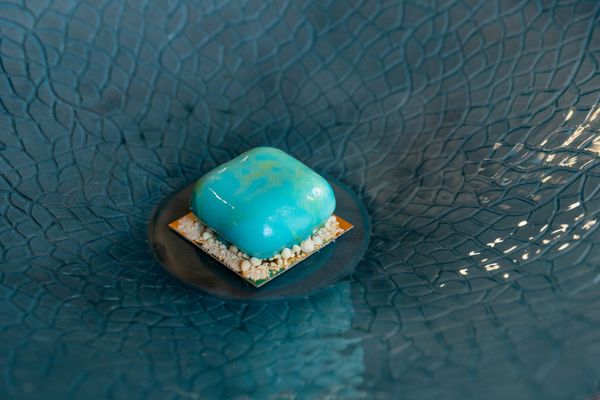
A fragrance to savor | Auguszt Confectionary x 7scents
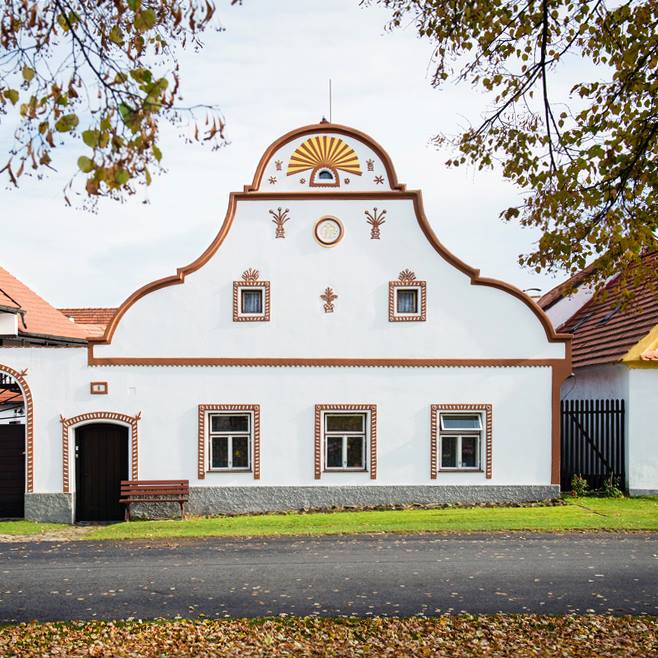
Magical villages in Eastern Europe | TOP 5
